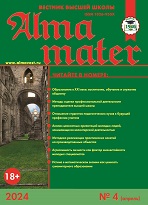UDC 373+37.09:336
https://doi.org/10.20339/AM.05-22.036
Andrey A. Linchenko, Cand. Sci. (Philosophy), Associate Professor, Head of the Laboratory for studying the financial and economic behavior of the population of the regions at Financial University under the Government of the Russian Federation — Lipetsk Branch, e-mail: linchenko1@mail.ru
Zhanna V. Korneva, Cand. Sci. (Economics), Associate Professor, Head of the Department “Regional Center for Financial Literacy” GAUDPO LO “Institute for the Development of Education”, e-mail: j_korneva@mail.ru
Elena V. Trutenko, Student at Financial University under the Government of the Russian Federation, e-mail: shiboko@yandex.ru
The article was devoted to a comparative analysis of the features of teaching financial literacy in preschool, general and professional educational organizations of the Lipetsk Region in Russia. The results of the monitoring of the place and role of aspects of teaching financial literacy in the educational practices of organizations in the Lipetsk Region showed a controversial picture. On the one hand, monitoring revealed the presence in the educational programs of most organizations of modules in the direction of financial literacy. On the other hand, the total amount of hours allocated for the development of financial literacy is not significant and is mainly implemented in extracurricular activities. It was concluded that the greatest problems are present at the level of general education, where the absence of separate financial literacy courses in educational practices is noticeable. Educational and outreach activities to improve financial literacy are actively implemented in the segments of educational and extracurricular activities, remaining in most organizations outside of elective courses. The results of the monitoring allow us to speak about the readiness of the education system in the Lipetsk Region to act as one of the institutions for improving the level of financial literacy, provided that the place of the financial literacy course in educational activities increases, as well as the formation of conditions for the continuity of topics and practices of teaching the course at all levels of education.
Keywords: financial literacy, educational practices, teaching the basics of financial literacy, financial education.
References
1. Aslanov, D.I., Matveeva, E.I. Features of the formation of the foundations of financial literacy in elementary school. Actual problems of economics, sociology and law. 2020. No. 1. P. 15–18.
2. Gorodetskaya, N.I., Rutkovskaya, E.L. Formation of financial literacy of primary school students in modern conditions. Teaching history and social science at school. 2019. No. 3. P. 71–80.
3. Gurov, V.N., Khamzina, E.V. Financial literacy of the head of a general school: knowledge and discipline. Innovations in education. 2019. No. 10. P. 5–12.
4. Kochurova, E.A., Romanova, M.Y. Ways to improve the financial literacy of primary and secondary school students. Primary education. 2019. Vol. 7. Vol. 5. P. 28–32.
5. Kuzmenkova, N.A. Formation of financial literacy in mathematics lessons in basic school. Information and communication technologies in teacher education. 2019. No. 3 (60). P. 36–44.
6. Kurmasheva, A.R. Integration of financial literacy topics into the social studies course in primary and secondary schools. Kaliningrad Bulletin of Education. 2020. No. 1 (5). P. 55–60.
7. NAFI. Analytical Center. The level of financial literacy of the population of the Lipetsk region. Report on the results of sociological research. 2020 Moscow: NAFI, 2020. 52 p.
8. Financial literacy. URL: https://www.banki.ru/wikibank/finansovaya_gramotnost/
9. Shingaev, S.M., Medved, I.V. Command and dialogue methods of teaching as a means of forming financial literacy of primary school students. Pedagogy. Questions of theory and practice. 2020. Vol. 5. No. 3. P. 282–288.
10. Gilenko, E., Chernova, A. Saving Behavior and financial literacy of Russian high school students: an application of a copula-based bivariate probit-regression approach. Children & Youth Services Review. 2021. Aug., Vol. 127. P. 106–122.
11. Gramațki, I. A comparison of financial literacy between native and immigrant school students. Education Economics. 2017. Vol. 25. No. 3. P. 304–322.
12. Wright, T. Comparing the Financial Literacy of Public School, Christian School, and Homeschooled Students. Journal of Research of Christian Education. 2016. Vol. 25. No. 1. P. 56–75.











.png)






